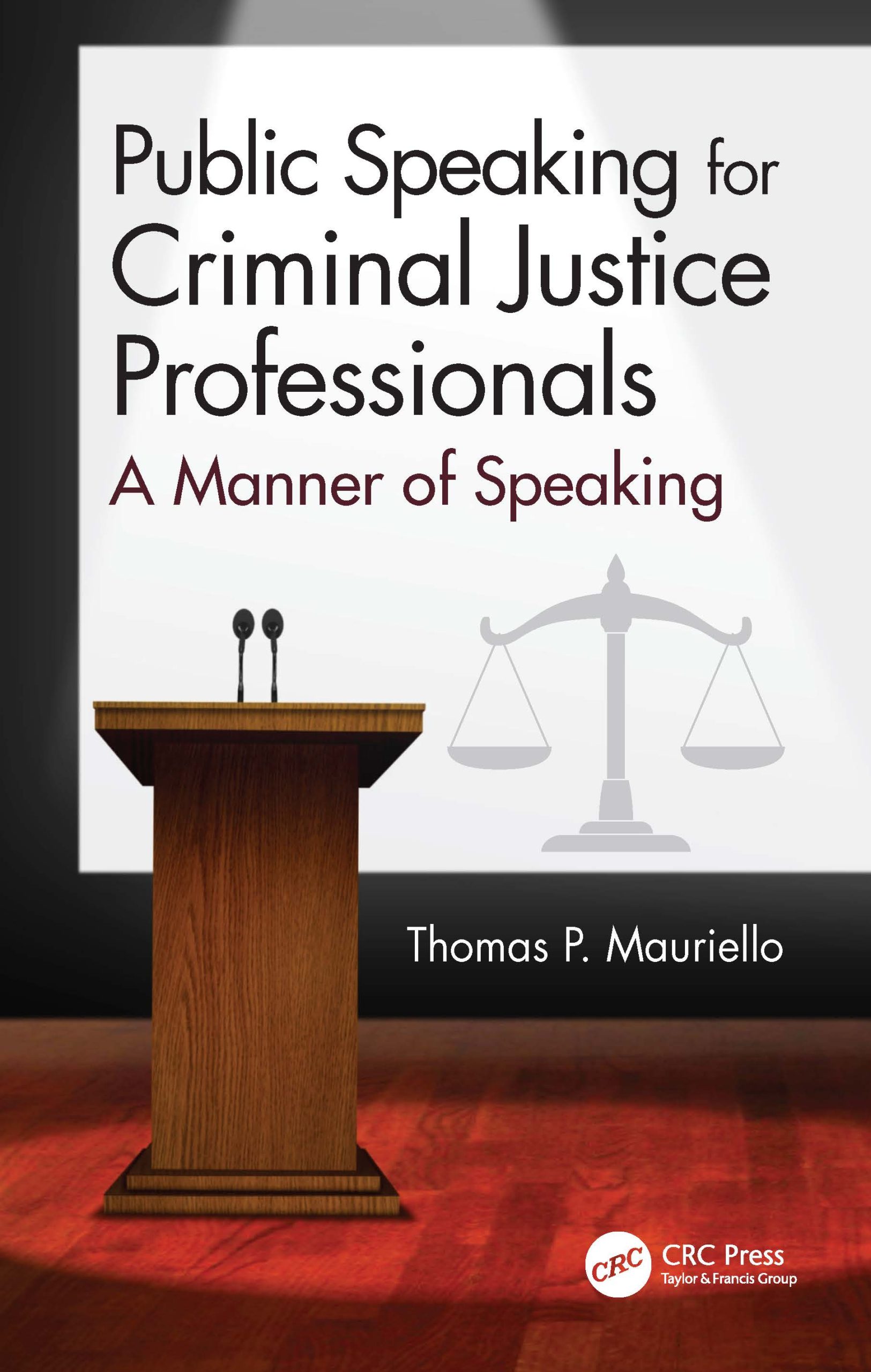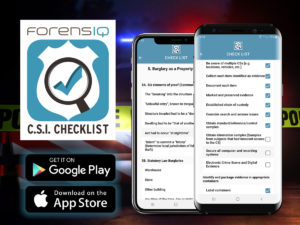3D Prints Takes Over Traditional Clay Modeling
Traditional Clay Modeling in Forensic Facial Reconstruction is being replaced by 3D Printings. The process consists of recreating the face of a person with only the skull as a reference. When making a clay model you had to be an artist schooled in anatomy, anthropology, and ontology. Even though clay models have been used for many years their is a major problem with the current practice of forensic facial reconstruction and it’s that the skull must be used and can, in the process, potentially be damaged. This machine is called Z Scanner where it makes a scan of the skull, then a Z650 3D printer is used to produce a lifesize replica of the skull. For more information go to the link below.
[Abstract written by Mercedes Quick, ForensIQ Intern, 10/27/14]
Wallet-sized Labs the Next Big Thing for Toxicology
Royal Melbourne Institute of Technology, (RMIT) researchers are developing an inexpensive, portable toxicology laboratory, that is so small you could fit it in your wallet. This new microfluidic chip will be used for toxicology and drug discovery testing. For more information on how they plan to use this new chip please go to the website below.
http://www.forensicmag.com/news/2014/10/wallet-sized-labs-next-big-thing-toxicology
[Abstract written by Mercedes Quick, ForensIQ Intern, 10/29/14]
Departments of Justice & Defense Grants to Improve Forensic Identification
The Department of Justice and the Department of Defense have awarded assistant professor Catherine Grgicak in biomedical forensic sciences at Boston University School of Medicine, approximately $2.5 million to more accurately analyze DNA evidence at a crime scene. Grgicak and her collaborators are producing and testing methods that provide match statistics for DNA comparisons as well as determining the probability that a certain number of contributors give rise to biological evidence. For additional information, please go to the link below.
http://www.forensicmag.com/news/2014/10/doj-and-defense-grants-improve-forensic-identification
[Abstract written by Mercedes Quick, ForensIQ Intern, 10/29/14]
Human Skulls Found at Connecticut Transfer Station
The skulls of an older man and woman were found at a Connecticut waste transfer station. The skulls and the mandible were sent to the medical examiner’s office in Farmington, Connecticut, where it was determined the larger one came from a man and the smaller skull and mandible came from a woman. There were no signs of trauma on either skull. The skulls are being sent to an anthropologist to get a more accurate estimate of the ages of the deceased, he said. For more information please go to the website below.
http://www.forensicmag.com/news/2014/10/human-skulls-found-connecticut-transfer-station
[Abstract written by Mercedes Quick, ForensIQ Intern, 11/02/14]
Forensic science solves mystery of Richard III’s death
Richard III was the last king of England to die in battle, over 500 years ago. He was discovered buried under a parking lot in Leicester, England, in September 2012. DNA tests confirmed its identity five months later. Today researchers use modern forensic science to figure out which injuries likely caused his death. They did this by using whole body CT scans and micro-CT imaging of injured bones to examine signs of trauma to the skeleton. For additional information, please go to website below.
http://www.cbsnews.com/news/forensic-analysis-of-richard-iii-death-solves-mystery/
[Abstract written by Mercedes Quick, ForensIQ Intern, 10/14/14]
Houston Forensic Science Center awarded $1.26 million grant
The Houston Forensic Science Center (HFSC) has been awarded a $1.26 million grant from the National Institute of Justice. The money will be used to train staff on the latest trends and technology in the field, and to buy additional DNA analyzing equipment. This equipment will enhance the Center’s capabilities, allowing it to process evidence more quickly and efficiently.
For additional information, please go to website below.
[Abstract written by Mercedes Quick, ForensIQ Intern, 10/14/14]
The ForensicWeek.com Webcast TV Show Airing Episode 65
LIVE this Thursday, October 16th at 7:00 P.M. (EST). The topic this week, “Forensic Art Communication ¾ Making Lemonade out of Lemons.” Return guest for this show is Sandie Enslow, Graphic Arts Coordinator and Forensic Artist for the Los Angeles County Sheriff’s Department. Sandie introduced the art of forensic art communications during her first guest appearance in Episode 46. This time she will be focusing on a criminal case she discussed in her first appearance, but could not elaborate on because it was still under active investigation. See how Sandie transformed the memory and hand-sketchings of the rape victim into the exact likenesses of the two suspect who were ultimately arrested and convicted. So join host, Tom Mauriello on www.ForensicWeek.com, brought to you by ForensIQ, Inc. Thank you for watching!
Body parts forgotten in crime lab over 7 years
A bag of human remains were discovered in a refrigerator at the Delaware Office of the Chief Medical Examiner. “All we know about the remains is that they were found in a wooded area in Kent County and have been in the refrigerator since 2006.” This shows us how uncontrolled and lax procedures are at the OCME’s Controlled Substances Laboratory. A judge is considering filing a motion that could potentially effect well over 200 pending drug cases. These cases could be thrown out and many more closed drug prosecutions could result in being overturned due to the lack of following procedures at the state’s only drug testing lab.
http://www.delawareonline.com/story/news/local/2014/09/21/body-parts-ocme-went-unnoticed-six-years/16020999/
[Abstract written by Mercedes Quick, ForensIQ Intern, 9/23/14]
UF partners with FL. Crime Scene Investigation Academy
The University of Florida has formed a three-year partnership with the Crime Scene Investigation Academy, which will provide training to their forensic science master’s program. Students will get hands-on experience with skeletal remain recovery, bloodstains pattern analysis and death investigation. This training is a three credit course that will start in December with only 24 spots open.
http://www.alligator.org/news/campus/article_e8522e0a-2cd9-11e4-aa55-0019bb2963f4.html
[Abstract written by Mercedes Quick, ForensIQ Intern, 9/23/14]
The ForensicWeek.com Show – “Anti-Bullying Awareness: School Security, Active Shooters, and Preventive Techniques.”
The ForensicWeek.com Webcast TV Show is airing Episode 64 LIVE this Thursday, October 2nd at 7:00 P.M. (EST). The topic this week is “Anti-Bullying Awareness: School Security, Active Shooters, and Preventive Techniques.”
Return guest for this show is Dr. Quanda Stevenson, Program Director and Professor for Criminal Justice at Athens State University, Athens, Alabama. Dr. Stevenson’s research concentrates on bullying, school violence, high risk students, intervention and prevention of school violence. With her will be two specially trained law enforcement officers referred to as School Resource Officers (SRO) and two students who have been victims of “bullying.” So join host, Tom Mauriello on www.ForensicWeek.com, brought to you by ForensIQ, Inc. Thank you for watching!
ForensicWeek.com Show airing Episode 63 – “Forensic Lexicology”
The ForensicWeek.com Webcast TV Show is airing Episode 63 this Thursday, September 18th at 7:00 P.M. (EST). The topic this week is “Forensic Lexicology¾Analyzing the Written Word.” Lexicology is the part of linguistics which studies words, their nature and meaning, the relationship between words, word groups and the whole lexicon. It is an investigative tool used by forensic accountants when examining data with perhaps the two most prevalent forms of questioned document evidence being “numbers” and “words.”
Forensic Accountant and author, Darrell Dorrell returns as a special guest on the ForensicWeek.com Show to discuss this valuable tool and demonstrate its use in during an investigation. So join host, Tom Mauriello and his student interns on www.ForensicWeek.com, brought to you by ForensIQ, Inc.
Thank you for watching!
ForensicWeek.com Webcast TV Show – Season 3 Beginning this Thursday – Sept. 4, 2014
ForensicWeek.com is beginning their third season and airing Episode 62 this Thursday, September 4th at 7:00 P.M. (EST). This season the show will be broadcast LIVE bi-weekly still on Thursdays from 7:00 PM to 8:00 PM (EST). ForensicWeek.com will continue to broadcast a webcast TV show for its viewers that satisfies its mission, goal and vision principles.
Mission: To present REAL forensic related content by REAL forensic professionals;
Goal: To broadcast topics of interest valued by an international viewership;
Vision: Well informed practitioners; mentored students; and enlightened jury pools.
This season’s premier show will highlight the episodes already archived on the ForensicWeek.com – YouTube channel, and announce the future shows scheduled for the upcoming bi-weekly broadcasts. So join host, Tom Mauriello and his student interns for this special premier show on www.ForensicWeek.com.
Thank you for watching!
Want to wear logo apparel with ForensicWeek.com, ForensIQ or UM-CCJS logos, then go to http://forensiq-inc.com/store/ and select from the ForensIQ Online Store.
Get Ahead With West Virginia University Summer Courses in Forensics
West Virginia has announced numerous upcoming courses as part of its Forensic Science Initiative. These courses will allow both forensic professionals and civilian practitioners to develop their skills on a variety of topics including, forensic photography, latent print development, paint evidence, blood presumptive testing, and fiber identification. All courses will take place at the Morgantown, West Virginia campus and upon completion; each participant will receive a certificate of completion.
Registration is open for the following WVU summer courses in June and July:
- Basic Crime Scene – June 2 – 6, 2014
- Latent Print Development – June 12 – 13, 2014
- Basic Crime Scene Photography for Law Enforcement – July 1 – 2, 2014
- Paint Evidence and the Forensic Laboratory – July 8 – 10, 2014
- Blood Presumptive Testing & Enhancement – July 10 – 11, 2014
- Identification of Natural and Man-made Fiber – July 15 – 17, 2014
- Characterization & Comparison of Dyed Fibers – July 22 – 24, 2014
- Introduction to Firearm Examination – July 28 – 30, 2014
Registration is free but attendees are responsible for travel and lodging costs.
Source: West Virginia University
[Abstract written by Noel Andres, ForensIQ Intern, 5/15/14]
American Academy of Forensic Science Job Postings
The American Academy of Forensic Sciences is offering a job posting webpage for applicants and candidates seeking a career in forensics. Not only can applicants search for jobs by a preferred state and country, but also by specific fields or application deadlines. Job postings on the AAFS website include but are not limited to: Forensic Toxicology Analyst, Laboratory Manager, Forensic Pathologist, Firearms Examiner, Latent Print Examiner, DNA Examiner, Forensic Supervisor, and Assistant and Full-time Professors of Forensic Science at Colleges and Universities.Each job post includes a job title, along with its corresponding duties and responsibilities, the organization name and location of the job, and the application deadline. Highly qualified applicants interested in a career in forensics should check out the job posting webpage immediately.
Organizations interested in posting jobs on the AAFS webpage can do so by logging in or creating an AAFS account through the AAFS Account Portal. If organizations have any questions on posting jobs they should Contact Jeff Lubers for assistance.
Click here to view all job postings or to post jobs on the AAFS webpage!
Source: American Academy of Forensic Science
[Abstract written by Noel Andres, ForensIQ Intern, 5/15/14]
Detecting Explosives with Light
Research from the University of Adelaide has created a sensor that can detect tiny quantities of explosives with the use of light and special glass fibers. This fibre sensor can detect explosives in concentrations as low as 6.3 ppm (parts per million). Its analysis time are only a few minutes. Traditionally explosives detection has involved looking for metals that encase them such as in land mines. But today explosive devices will often have no metal in them so we need to be able to detect the explosive material itself. It uses a plastic material that emits red light when illuminated with green laser light, and the amount of red light it emits is reduced by the presence of explosives. It also has high sensitivity and it can detect tiny quantities of an explosive. This can also be used to quantify the amount of explosive by looking at how the light emission changes over time. This type of technology could help greatly in the fight against terrorism.
Click here for full article
Source: Science Daily
[Abstract written by Alicia Terrell, ForensIQ Intern, 051514]






